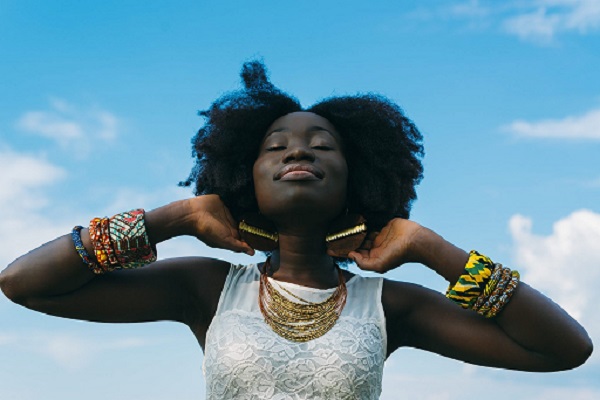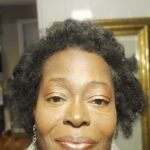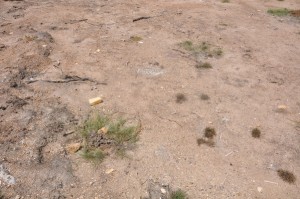It is often symbolized using Phi, after the 21st letter of the Greek alphabet. This formula is used to calculate mathematically perfect features.
However, upon deeper investigation, I discovered that the ancient Egyptians also used the same measurements when creating the Great Pyramids over 4,600 years ago. But unlike the ancient Greeks, they did not use those equations to develop a pseudo-scientific mathematical concept of beauty.
Later, those theories were advanced by the Romans who created a new white aesthetic. With this in mind, I began to wonder whether those mathematical equations, albeit subconsciously, were used when deciding on who would be the next Miss World.
The European slave trade and colonialism inflicted harmful psychological effects on the Afrikan psyche, including their concept of beauty. As a result of such conditioning, many women of Afrikan descent have become psychologically conditioned to view the Eurocentric model of beauty as the only acceptable one.
Consequently, many have absorbed an unbalanced view of their cultural identity, and struggle with a negative self-concept. Such indoctrination; often stemming from the home environment, through a colonial mentality, and reinforced through the media, has made many want to conform to a Eurocentric standard of beauty.
Many, to boost their sense of self-worth, have contributed to the multi-billion dollar industry in Asian and Brazilian hair and skin lightening creams (none of which are controlled by the Afrikan community) that has evolved to feed into the Afrikan woman’s negativity and dissatisfaction with her looks as she tries to conform to a standard of beauty that is alien to her.
How can this self-hatred be addressed by Afrikan parents? As a young mother, the first doll that I gave my daughter was a black doll. Today, many decades later, I have a fascination with the colour of the doll that the child has been given. To date, the majority of black parents still give their child dolls that do not reflect them in skin-tone, and that to me says a lot about the thinking of the care-giver.
I have only ever seen one white child carrying a black doll. I was bemused so I struck up a conversation to find out why. And I wondered, why then didn’t black parents think that it is odd to give a child a doll that they could not relate to?
As a parent, I realised the importance of making my daughter feel comfortable in her skin, and how the correct toys play a big part in how children see themselves and the world. Culturally appropriate toys help to build a child’s self-worth, which is an important aspect in the child’s development.
Appropriate toys can help young children to forge strong positive self-identities. Such toys help them to celebrate who they are, and through positive reflections, they learn self-worth. Self-worth, unlike self-esteem, is the sense that you deserve to be loved and respected, to take up space; while self-esteem, relies on external factors for validation.
Back in the 1940’s, Afrikan-American psychologist Kenneth Bancroft Clark conducted experiments using dolls to highlight children’s attitudes about race. These studies exposed the child’s absorption of racism and the effects it had on their self-esteem. Giving an Afrikan child a white doll as the sole image to nurture and play with, subtly and insidiously conditions that child to think that it is inferior.
In a society that has already conditioned it for self-hatred, it is damaging to the child’s psyche to give it a doll that it cannot visually identify with.
Another way to give children a balanced view is by teaching them that body image is not the most important factor in a person’s self-image. Developing inner strength and confidence, far outweighs the superficial external appearances that is so heavily promoted in society.
However, the most important method of instilling self confidence in children is to teach them their history. It is important that children are grounded in the accomplishments of its people. Such knowledge determines how we value ourselves. There is no denying that racial identities shape our lives, so it is important to build up resilience to the trials and tribulations of a philosophy that designates one set of people inferior, and another set of people superior, merely on the basis of skin colour.
In 1970, amid much controversy and disapproval from an audience who felt that a white contender should have been chosen; Grenadian, Jennifer Hosten became the first woman of Afrikan- Caribbean decent to win the coveted title and a black Miss Afrika South was placed second. In 2001, Nigerian, Agbani Darego was the first Afrikan to be crowned as Miss World.
There are no mathematical equations that can measure beauty, because beauty is subjective; we all have different concepts of what we consider beautiful.
Nonetheless, a lot of concepts are based on theories, or pseudo-science and these beliefs are expounded as fact. Unfortunately, most people in society are happy to go along with such views, never questioning its validity. Race, like beauty, is another pseudo-science that has been used to dominate and to promote a certain belief which moulds other people’s thinking and actions.




